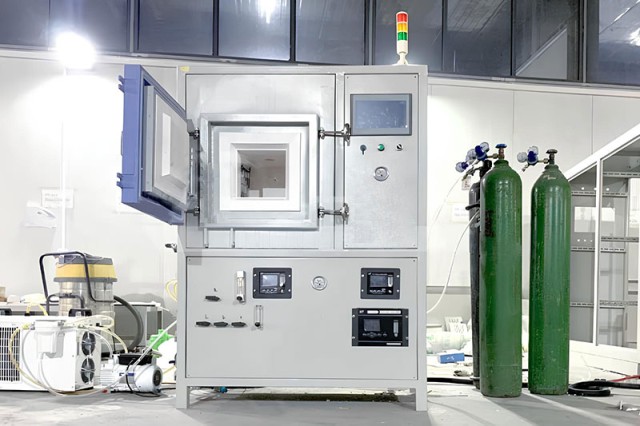Introduction to Hydrogen Atmosphere Furnaces
Hydrogen atmosphere furnaces play a pivotal role in modern industrial processes, particularly in high-end alloy sintering and advanced material manufacturing. These specialized furnaces operate under controlled hydrogen environments, ensuring precise temperature management and chemical reactions. This guide delves into the intricacies of hydrogen atmosphere furnaces, covering their types, components, applications, safety measures, and maintenance strategies. Understanding these aspects is crucial for industries seeking optimal performance and safety in their operations. Join us as we explore the comprehensive world of hydrogen atmosphere furnaces, highlighting their significance and operational considerations.
Types of Hydrogen Atmosphere Furnaces
Hydrogen atmosphere furnaces are specialized heating equipment designed for high-temperature processing in a controlled hydrogen environment. These furnaces are essential for various industrial applications, including material processing and experiments that require specific chemical reactions or changes in material properties. The primary function of a hydrogen atmosphere furnace is to heat materials in a high-purity hydrogen environment to achieve desired heat treatment effects. This section delves into the different types of hydrogen atmosphere furnaces, focusing on their structures, applications, and key features.
Vertical Hydrogen Atmosphere Furnaces
Vertical hydrogen atmosphere furnaces are characterized by their vertical orientation, where the heating chamber is positioned vertically. This design is particularly suitable for applications requiring uniform heating of samples, such as calcination or sintering of powders. The vertical configuration allows for efficient heat distribution and minimizes heat loss, ensuring consistent temperature throughout the chamber.
Key features of vertical hydrogen atmosphere furnaces include:
- Uniform Heating: The vertical design facilitates uniform heating, crucial for processes like sintering and calcination.
- Space Efficiency: Occupying less horizontal space, these furnaces are ideal for laboratories and production facilities with limited floor space.
- High Temperature Capability: Equipped with heating elements such as molybdenum disilicide or ceramic fiber elements, these furnaces can reach temperatures up to 1600°C.
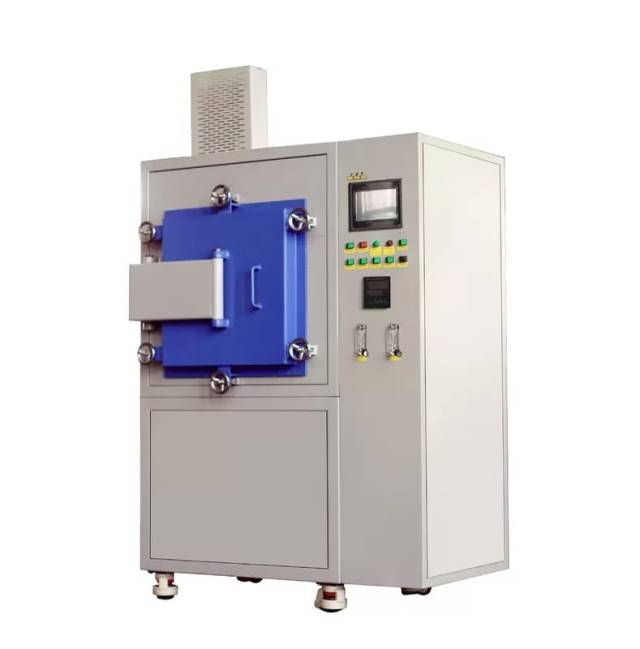
Horizontal Hydrogen Atmosphere Furnaces
Horizontal hydrogen atmosphere furnaces have a horizontal orientation, with the heating chamber positioned horizontally. This design is optimal for continuous processing of long samples or materials, such as heat-treating long wires or rods. Horizontal furnaces are known for their ability to handle large volumes of materials and maintain high throughput.
Key features of horizontal hydrogen atmosphere furnaces include:
- Continuous Processing: Suitable for applications requiring continuous processing, enhancing production efficiency.
- High Throughput: Designed to handle large quantities of materials, making them ideal for industrial-scale operations.
- Versatile Heating Elements: Equipped with various types of heating elements, such as resistance wires or graphite elements, these furnaces can achieve high temperatures efficiently.
Split Hydrogen Atmosphere Furnaces
Split hydrogen atmosphere furnaces feature a split design, where the furnace chamber is divided into two halves, each with its own heating element. This design allows for easy loading and unloading of materials without the need to remove the entire chamber, enhancing operational flexibility and efficiency.
Key features of split hydrogen atmosphere furnaces include:
- Ease of Access: The split design facilitates easy access for loading and unloading materials, reducing downtime.
- High-Temperature Processing: Ideal for applications requiring high-temperature processing, such as annealing or brazing.
- Customizable Heating Elements: Equipped with various types of heating elements, such as silicon carbide (SiC), these furnaces can be customized to meet specific application requirements.
Rotary Hydrogen Atmosphere Furnaces
Rotary hydrogen atmosphere furnaces are designed for continuous processing of materials by rotating them within a cylindrical chamber heated by a heating element. The rotary motion ensures uniform heating and efficient mixing of materials, making them suitable for applications involving powders or granules, such as calcination or roasting.
Key features of rotary hydrogen atmosphere furnaces include:
- Uniform Heating: The rotary motion ensures uniform heating and mixing of materials, enhancing process consistency.
- Efficient Processing: Suitable for high-temperature processing of powders or granules, improving production efficiency.
- Versatile Heating Elements: Equipped with various types of heating elements, such as ceramic fiber elements or silicon carbide (SiC), these furnaces can achieve high temperatures and maintain operational stability.
Applications of Hydrogen Atmosphere Furnaces
Hydrogen atmosphere furnaces are widely used in various industries, including aerospace, automotive manufacturing, and electronics. Key applications include:
- Sintering and Annealing: Specially designed for sintering or annealing materials in a hydrogen or inert gas environment.
- High-Temperature Processing: Capable of achieving adjustable temperatures from 0 to 1600°C, these furnaces are ideal for high-temperature processing of materials.
- Material Quality Assurance: The high-purity hydrogen environment ensures that materials are not affected by other gases, maintaining quality and stability during heat treatment.
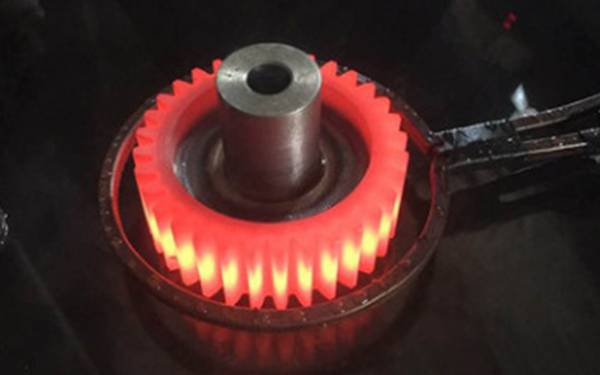
Conclusion
Hydrogen atmosphere furnaces are indispensable tools in high-temperature material processing, offering a range of designs tailored to specific applications. Whether vertical, horizontal, split, or rotary, each type of hydrogen atmosphere furnace provides unique advantages in terms of heating uniformity, operational efficiency, and material handling capabilities. Understanding the features and applications of these furnaces is crucial for selecting the right equipment to meet specific industrial needs.
Components and Design of Hydrogen Atmosphere Furnaces
Hydrogen atmosphere furnaces are specialized equipment designed for processes such as sintering stainless steel and brazing, which require a controlled environment with reduced oxygen levels. These furnaces are equipped with several key components and safety features to ensure efficient and safe operation.
Stainless Steel Inner Tanks
The inner tank of a hydrogen atmosphere furnace is typically made of stainless steel. This material is chosen for its resistance to high temperatures and corrosion, which are essential in a hydrogen-rich environment. The stainless steel construction ensures that the furnace can maintain its structural integrity even under prolonged exposure to high temperatures and reactive gases.
Silicone O-Rings
Sealing is critical in hydrogen atmosphere furnaces to prevent leaks and ensure a consistent atmosphere within the chamber. Silicone O-rings are used for sealing the furnace door. These O-rings are designed to withstand high temperatures and maintain their elasticity, ensuring a tight seal even after repeated use.
Water Cooling Systems
To protect the silicone O-rings and other components from overheating, water cooling systems are installed. These systems circulate water around the furnace door and other critical areas, reducing the temperature and extending the lifespan of the seals and other sensitive components.
Safety Features
Safety is paramount in hydrogen atmosphere furnaces due to the flammable and explosive nature of hydrogen. Several safety features are integrated into the design to mitigate risks:
- Hydrogen Detectors: These devices monitor the oxygen levels inside the furnace. If the oxygen level drops below a safe threshold, indicating a potential hydrogen leak, the detector triggers an alarm to alert operators.
- Explosion-Proof Valves: These valves are designed to prevent the buildup of pressure within the furnace. In the event of an explosion, the valves will release pressure in a controlled manner, minimizing the risk of structural damage.
- Burner and Combustion Controller: Excess hydrogen gas is burnt off using a burner and combustion controller. This system ensures that any leaked hydrogen is safely combusted, preventing it from accumulating within the furnace.
- Alarm Systems: Visual and auditory alarms are installed to alert operators of any safety issues. These alarms are connected to the hydrogen detectors and other safety systems, providing immediate notification of any potential hazards.
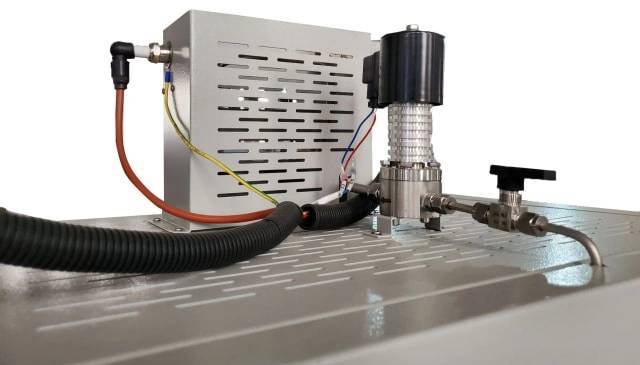
Additional Components
Other components installed in the inner casing of the furnace include thermocouples for temperature monitoring, intake and outlet valves for gas control, and pressure gauges for monitoring internal pressure. These components work together to provide precise control over the furnace environment.
Operational Flexibility
Hydrogen atmosphere furnaces are designed to handle various gases, including hydrogen, argon, nitrogen, oxygen, carbon monoxide, and ammonia. This flexibility allows for a wide range of applications, from sintering stainless steel to conducting experiments in controlled atmospheres.
Advantages of Hydrogen Atmosphere Furnaces
- Uniform Temperature Field: The design of these furnaces ensures a uniform temperature distribution within the chamber, which is crucial for consistent processing results.
- Low Surface Temperature: The water cooling systems help maintain a low surface temperature, reducing the risk of burns and fire hazards.
- Fast Temperature Control: These furnaces can rapidly reach and stabilize at the desired temperature, improving efficiency and reducing energy consumption.
- Energy Efficiency: The design incorporates energy-saving features, minimizing power usage without compromising performance.
- Clean and Pollution-Free: The controlled atmosphere prevents contamination, ensuring that the processed materials remain clean and free from impurities.
In conclusion, hydrogen atmosphere furnaces are sophisticated equipment designed with safety, efficiency, and precision in mind. The integration of stainless steel inner tanks, silicone O-rings, water cooling systems, and advanced safety features ensures that these furnaces can handle the demanding requirements of processes involving hydrogen while maintaining a high level of operational safety.
Applications of Hydrogen Atmosphere Furnaces
Hydrogen atmosphere furnaces play a pivotal role in various industries, particularly in high-end alloy sintering, ceramic/metallic compositions, and mission-critical part manufacturing. These furnaces utilize hydrogen as a medium to heat materials at high temperatures, achieving specific chemical reactions or changes in material properties. The unique features of hydrogen atmosphere furnaces, such as high-purity hydrogen environments, reduced oxidation, rapid heating and cooling, uniform heating, and a wide range of applications, make them indispensable in several key sectors.
High-End Alloy Sintering
High-end alloy sintering is one of the primary applications of hydrogen atmosphere furnaces. These furnaces are used to process advanced alloys that require precise control over the sintering atmosphere to achieve desired mechanical and chemical properties. The high-purity hydrogen environment ensures that the alloys are not affected by other gases, maintaining their integrity and stability. For instance, in the aerospace industry, hydrogen atmosphere furnaces are used to sinter components for aircraft engines and turbines, where high-temperature resistance and structural integrity are critical.
Ceramic/Metallic Compositions
Hydrogen atmosphere furnaces are also extensively used in the processing of ceramic/metallic compositions. These compositions often require a reducing atmosphere to prevent oxidation and achieve the desired properties. The hydrogen in the furnace effectively reduces oxidation reactions on the material surface, ensuring that the materials do not degrade at high temperatures. This is particularly important in the manufacture of electronic components, where the purity and performance of ceramic/metallic materials are paramount.
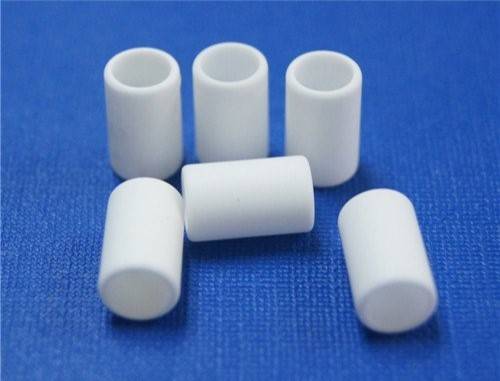
Mission-Critical Part Manufacturing
In mission-critical part manufacturing, such as in the automotive and defense industries, hydrogen atmosphere furnaces are used to heat treat various components like gears, shafts, bearings, and engine parts. The controlled atmosphere improves the strength, durability, and wear resistance of these parts, contributing to safer and more efficient vehicles and equipment. For example, in the automotive industry, hydrogen atmosphere furnaces are used to treat components that must withstand high loads and temperatures, ensuring their longevity and reliability.
Specific Applications
-
Annealing: Hydrogen atmospheres are used in hydrogen-compatible furnaces for annealing processes. Annealing softens metal, returning toughness to metal that has been embrittled by being work-hardened. This is crucial in industries such as rolling mills, wire mills, and tube mills, where continuous strands of metal must be softened for subsequent processing stages.
-
Sintering: Sintering has been used for powdered metals for decades, including press-and-sinter (P/M), Metal Injection Molding (MIM), and Additively Manufactured (AM) parts using a binder jet type of process. In some cases, particularly for MIM and AM parts, the furnace employed might be a vacuum furnace that uses a partial-pressure stream of hydrogen backfill to clean the parts and prevent oxidation, which is critical due to the high surface area of the powdered metal particles.
-
Brazing: Brazing is widely employed for joining two or more parts into a high-strength assembly, often creating subassemblies that can’t be made in a single fabrication step. In brazing, hydrogen plays a crucial role as a flux in reducing surface oxides to enable the braze material to flow properly and adhere.
Conclusion
Hydrogen-atmosphere furnaces, especially those operated above about 1350°C (2462°F), are very useful for sintering many high-end alloys and ceramic/metallic compositions. However, the demands placed on refractory materials are formidable. In pusher-plate furnaces, the demands on refractory are especially great on the pusher plates. Extremes of thermal cycling, mechanical loading, and chemical attack from such a severe reducing atmosphere combine to create the need for very specialized ceramics. Great care should be taken and significant testing performed to ensure maximum performance of the system. The unique features and wide range of applications of hydrogen atmosphere furnaces make them an essential tool in various industries, contributing to the advancement of high-tech manufacturing processes.
Safety Measures in Hydrogen Atmosphere Furnaces
Hydrogen atmosphere furnaces are critical equipment in various industrial processes, particularly in metallurgy, ceramics, and semiconductor manufacturing. However, the use of hydrogen poses significant safety risks due to its flammability and potential for explosions. Therefore, implementing robust safety measures is essential to mitigate these risks. This section delves into the comprehensive safety protocols and features integrated into hydrogen atmosphere furnaces to ensure operational safety.
Dew Point Control
Maintaining the dew point of the furnace atmosphere is crucial in certain applications. Dew point control systems monitor the moisture content in the furnace environment, preventing condensation that could lead to material degradation or safety hazards. Advanced systems like the Model 580 hydrometer offer precise dew point measurements, with calibrated ranges from -130°F to +70°F in 2°F increments. These systems include dual set-point alarms, digital readouts, and recorder outputs, ensuring real-time monitoring and immediate action if the dew point exceeds safe levels.
Oxygen/Hydrogen Analyzer
Portable oxygen/hydrogen analyzers are essential tools for ensuring safe hydrogen introduction and removal from enclosed retorts, as per NFPA 86C guidelines. These analyzers provide separate digital readouts for hydrogen and oxygen, with a built-in sample pump, filters, and flowmeter. The rapid 10-second warm-up time and rechargeable battery operation enhance their usability and effectiveness. By monitoring both oxygen and hydrogen levels, these analyzers prevent the formation of explosive mixtures, ensuring a safe working environment.
Hydrogen Leak Monitoring
Hydrogen leak monitoring is a critical safety feature in hydrogen atmosphere furnaces. Ambient atmosphere analyzers calibrated at 1/4 of the Lower Explosive Limit (LEL) provide an early warning system for hydrogen leaks. An alarm output can trigger a solenoid to shut off the hydrogen source, preventing potential explosions. Additionally, the furnace can be flooded with inert gas to maintain a safe status in the event of a leak detection.
Gas Safety Systems
When working with gases containing more than 5% hydrogen, a gas safety system is mandatory to protect against explosions. These systems control the flow of gases using fully automated flow controllers, adhering to SIL2 standards. In case of malfunction, the system immediately shifts to a secure state. Hydrogen sensors installed at strategic points, such as the top of the furnace, respond swiftly to leaks by triggering safety protocols.
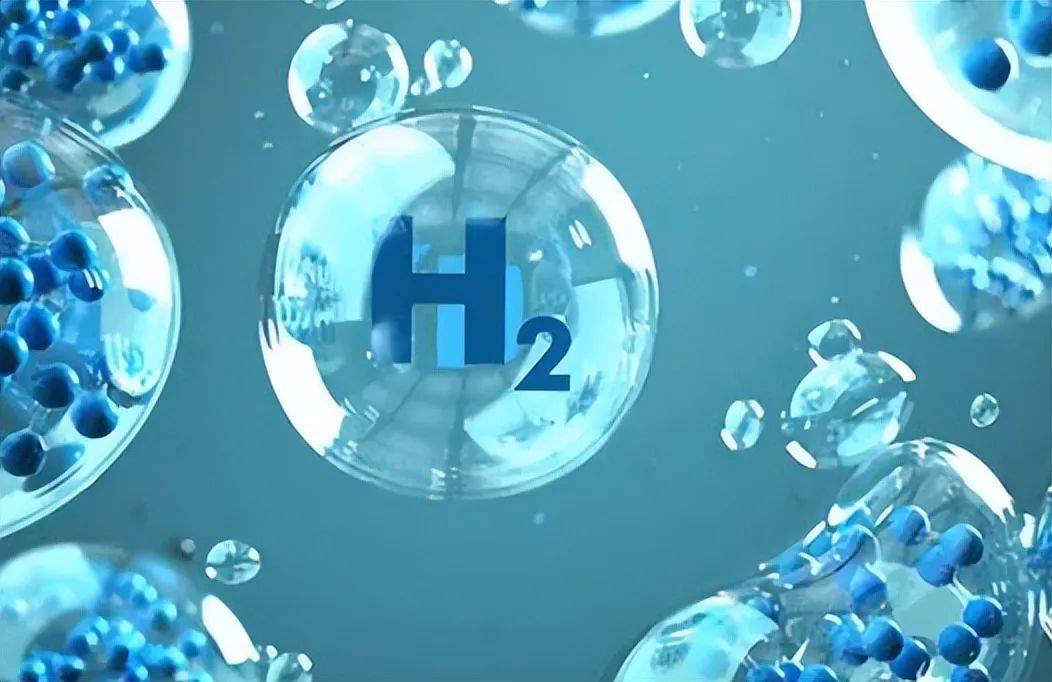
Furnace Design and Features
The design of hydrogen atmosphere furnaces incorporates several safety features. Stainless steel inner tanks and silicone O-ring sealed doors prevent gas leaks. Water cooling systems reduce the O-ring sealing temperature, enhancing durability and safety. Thermocouples, intake valves, air outlet valves, and pressure gauges monitor and control the furnace environment. Hydrogen detectors, burners, combustion controllers, alarm lamps, igniters, and explosion-proof valves further enhance safety.
Operational Flexibility
All tube furnaces can be adapted for hydrogen use, offering varying usable spaces and temperatures. For applications requiring hydrogen at temperatures above 1800°C, cold wall furnaces are recommended. These furnaces support a variety of gases, including hydrogen, argon, nitrogen, oxygen, carbon monoxide, and ammonia, ensuring operational flexibility and safety.
Conclusion
In conclusion, hydrogen atmosphere furnaces are equipped with a range of safety measures to prevent flammability and explosion risks. From dew point control and oxygen/hydrogen analyzers to hydrogen leak monitoring and robust furnace designs, these features ensure a safe and efficient operational environment. By adhering to these safety protocols, industries can mitigate risks and enhance the reliability of their processes.
Related Products
- Controlled Nitrogen Inert Hydrogen Atmosphere Furnace
- 1400℃ Controlled Atmosphere Furnace with Nitrogen and Inert Atmosphere
- 1200℃ Controlled Atmosphere Furnace Nitrogen Inert Atmosphere Furnace
- 1700℃ Controlled Atmosphere Furnace Nitrogen Inert Atmosphere Furnace
- High Pressure Laboratory Vacuum Tube Furnace Quartz Tubular Furnace
Related Articles
- How Controlled Atmosphere Furnaces Improve Quality and Consistency in Heat Treatment
- Atmosphere Furnaces: Comprehensive Guide to Controlled Heat Treatment
- guide to UNIVERSAL TUBE FURNACES
- Introducing the Lab Vacuum Tube Furnaces
- Controlled Atmosphere Furnace: Comprehensive Guide to Advanced Heat Treatment
